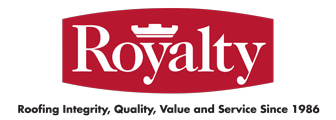Removing Snow From Your Commercial Roof
When the temperature is frigid and the winds blow during the winter months, your commercial roof needs some extra care. One area of concern is the removal of snow and ice, because if that is not done properly, there are risks to the roof.
Usually when snow falls on a flat roof, it is not removed. Instead it is left there to melt and drain. But there are potential weight considerations, and when several inches of snow have accumulated, you should consider manually removing snow before it starts causing problems.
When you are dealing with large amounts of snow, the weight can impact the safety of your building. Then as all that snow melts, your building’s drainage systems can become overwhelmed. So, as snow accumulates – either after a blizzard or over time – consider having it removed by your maintenance crew, or hire a contractor. Also make sure the building’s drains, gutters and downspouts are clear enough to handle snow melt.
Where does the snow go?
Before you begin removing snow from your commercial roof, check the ground areas around the perimeter where snow will be dumped. Obviously, avoid throwing snow onto walkways, near doors, or onto cars or fragile landscaping. Relocate things on the ground that potentially could be damaged by large quantities of falling snow.
Safety on the roof
Being on a commercial rooftop can be treacherous in the best conditions; a slippery, snow-covered roof makes it worse. If you’re using your own crew to remove snow, make sure they are working safely around the perimeter and are in regular communication with others on the crew.
Removal techniques and tools
Commercial roof materials can be damaged in the process of snow removal. So be extremely cautious while removing snow. Sharp-edged metal shovels can poke holes in single-ply membranes, and it goes without saying that you shouldn’t chop ice on a roof’s surface.
If ice has developed on the roof and is clogging drainage systems, consider using a de-icing product. Just make sure that the product you use is chemically compatible with your roof system. The roof manufacturer should be able to advise you on this.
If you have any concerns about snow and ice damaging your roof, contact Royalty y right away.


